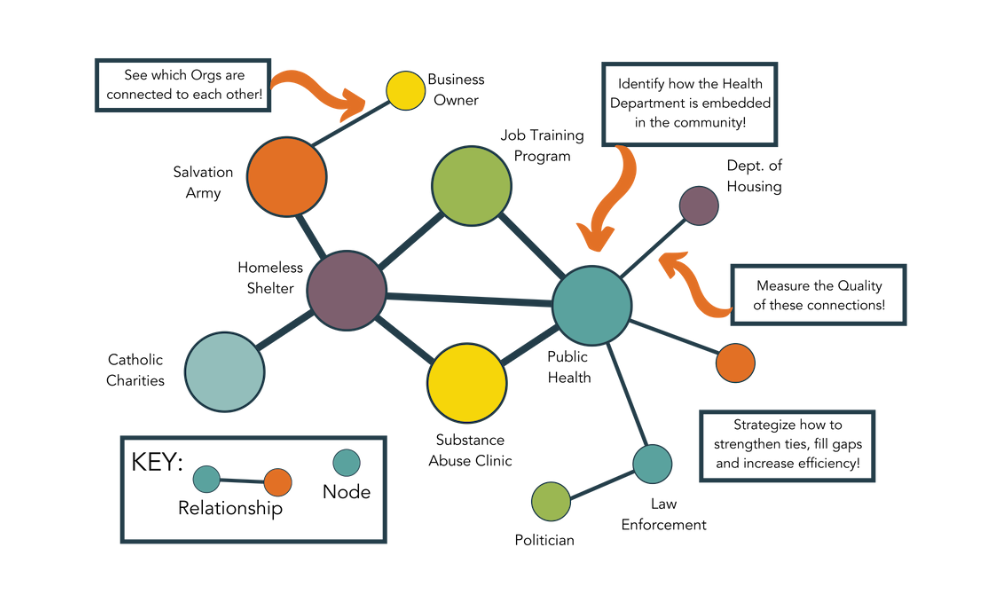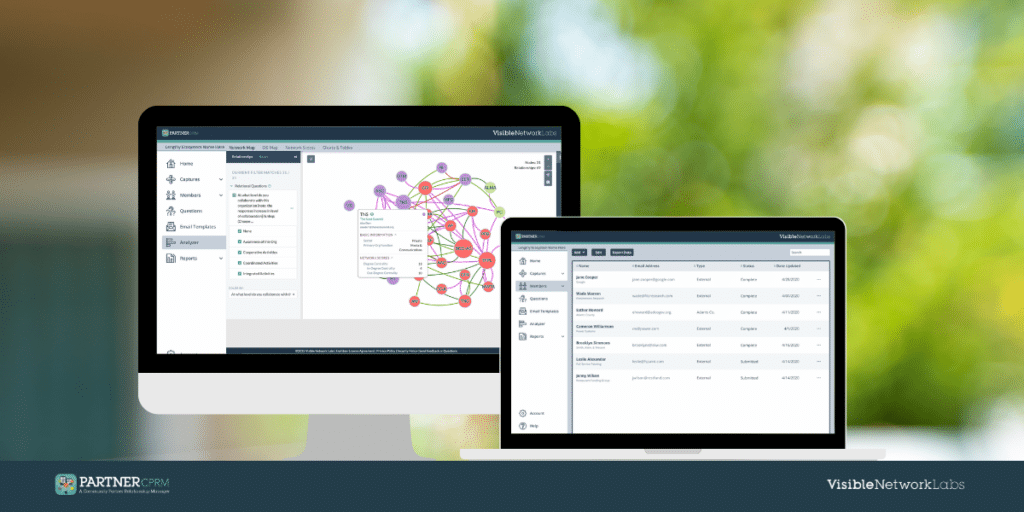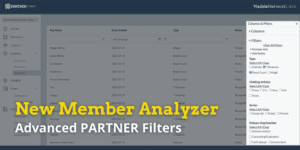Social Network Analysis (SNA) is a powerful tool for unraveling the complex web of relationships that define community dynamics. By examining how individuals and organizations interact within a network, SNA provides insights into patterns of influence, information flow, and resource allocation. Identifying key influencers within these networks is crucial for anyone looking to engage communities effectively, whether for spreading innovative ideas, mobilizing social change, or enhancing strategic planning and implementation efforts.
Table of Contents
Why Identify Community Influencers?
Identifying community influencers is a key strategy for enhancing the effectiveness of initiatives within communities. Here are the five top reasons to focus on finding these pivotal individuals or organizations:
Efficient Information Dissemination: Influencers possess the unique ability to quickly spread messages through their established networks. This rapid spread is invaluable for campaigns requiring widespread awareness in minimal time, making every communication more impactful and far-reaching.
Enhanced Trust and Credibility: Messages delivered by recognized and respected community members carry more weight and are more likely to be trusted. Engaging influencers to champion your cause or share your message can significantly boost its credibility and acceptance among the broader community.
Increased Engagement and Participation: Leveraging the influence of community leaders can motivate more individuals to take part in initiatives, change behaviors, or support causes. The personal connection and respect for these influencers translate into higher participation rates and more enthusiastic engagement from the community.
Resource Optimization: Focusing efforts on key influencers allows organizations to maximize their impact without expending excessive resources. This strategic approach ensures that limited funds, time, and effort yield the greatest possible outcomes by utilizing the natural networks and platforms of influencers.
Sustainability and Community Ownership: Initiatives led or supported by local influencers are more likely to be sustained over time. Their involvement fosters a sense of community ownership, ensuring that projects continue to thrive even after direct support from initiating organizations winds down.
By concentrating on these key advantages, organizations can harness the power of community influencers to drive more effective, trusted, and sustainable outcomes in their initiatives.

Conceptualizing Influence in Communities
Influence in communities can be understood through various lenses, each offering unique insights into the mechanisms of social power and leadership:
Social Capital Theory posits that influence stems from access to and the ability to mobilize network resources. Influential members are those who can leverage their relationships to gain material or informational advantages.
Diffusion of Innovations Theory highlights the role of individuals in affecting the adoption rates of new behaviors or technologies. Influencers are seen as “early adopters” who catalyze change within the network.
Structural Hole Theory suggests that influence accrues to those who bridge gaps between otherwise disconnected network segments, facilitating new connections and opportunities.
Strength of Weak Ties Theory underscores the importance of weak, infrequent connections in spreading information beyond one’s immediate circle, thereby reaching a wider audience.
Social Influence Network Theory focuses on how individuals within a group shape each other’s opinions and behaviors through direct or indirect pressures.
These theories collectively underscore the multifaceted nature of influence, highlighting the importance of both an individual’s position within the network and the quality of their connections.
Intro to Social Network Analysis (SNA)
Social Network Analysis is a methodological approach that focuses on understanding the relationships and interactions within a network of individuals, organizations, or entities. Unlike traditional analyses that might treat entities as isolated units, SNA examines how the structure of ties affects individuals and the overall network’s behavior, performance, and outcomes.
What is Social Network Analysis?
At its core, SNA is about mapping and measuring relationships and flows between people, groups, organizations, computers, URLs, and other connected information/knowledge entities. The nodes in the network are the people and groups, while the links show relationships or flows between the nodes. SNA provides both a visual and a mathematical analysis of human relationships.
Management consultants, public health officials, city planners, and many others use SNA to identify relationships and flows among various agents to improve outcomes and performance. The key components of SNA include:
- Nodes: These are the individual actors within the networks, such as people, groups, or organizations.
- Edges: Also known as ties or links, these represent the relationships or interactions between the nodes.
- Networks: The overall structures that are formed by nodes and edges. Networks can be analyzed to uncover patterns like who is central in a network, how closely connected individuals are, or how information flows within the network.

Why Is SNA Important?
SNA’s importance lies in its ability to uncover hidden patterns, power dynamics, and key influencers within a network that might not be apparent through other analytical approaches. It allows for a deeper understanding of social structures, helping organizations and communities to:
- Enhance communication and information flow.
- Identify the most influential individuals or organizations within a network.
- Optimize the formation of teams or collaborations to increase efficiency and impact.
- Improve decision-making by understanding the relationships and dynamics at play.
By applying SNA, stakeholders can strategically navigate complex networks, leveraging the insights gained to foster stronger, more resilient, and efficient communities and organizations. As we explore further, understanding the application of SNA in identifying key influencers becomes a pivotal strategy in enhancing the effectiveness of community initiatives and interventions.
Measuring Influence Using SNA
There are many ways to measure influence, depending on how you choose to define it. In this article, we zero in on three common methods we use in our work. This includes network centrality measures, relationship perceptions, and attribute-based measures like resource and funding availability.
1. Network Centrality Measures
Translating these conceptual frameworks into actionable insights involves applying specific SNA metrics:
Degree Centrality measures an individual’s direct connections, serving as a proxy for potential influence.
Betweenness Centrality identifies individuals who act as bridges within the network, indicating their role in facilitating or controlling information flow.
Closeness Centrality highlights those who can efficiently disseminate information across the network, thanks to their proximity to others.
Eigenvector Centrality focuses on individuals connected to other well-connected members, suggesting influence through association.
Each type of centrality captures a slightly different type of position in the network. For example, degree centrality helps capture the immediate influence of an entity in your community, but it does not capture its influence across the entire network. Betweenness centrality captures the extent that an entity serves as a gatekeeper to new ideas or innovations. In contrast, closeness centrality captures their ability to share information with all members across the network.

2. Perceptions of Influence
Another SNA method for measuring influence focuses on understanding how partners perceive one another in terms of their power, influence, resource contribution, and other related factors. By averaging perceptions across the network, we can quickly identify which community members are seen to have the most influence.
We can further break down perceptions by sector, industry, focus area, or geographic area to identify differences in perception between segments of the community ecosystem.
While perceptions do not always represent objective influence, they have a significant influence on leadership roles, decision-making, funding, and other essential processes that impact community outcomes.
3. Attribution Influence Measures
A third category of influence measurement includes attribution proxy measures that capture a specific aspect of influence. For example, the availability of funding is often considered a critical indicator of influence in community, as these groups can afford to invest resources into new programs or initiatives and breathe life into their outcomes.
However, funding is only one of many types of value and influence brought to the table in communities. Consider other resources like volunteers, lived experience, in-kind services or tools, subject matter expertise, physical space, facilitation skills, and more.

PARTNER CPRM: SNA Platform for Mapping Relationships & Influencers
PARTNER CPRM harnesses the power of SNA to revolutionize community partnership management. It offers a comprehensive platform for:
Integrating perceptions of influence alongside quantitative data.
Analyzing influence based on resource control or other attributes.
Employing advanced analytics to uncover structural indicators of influence.
Through real-world case studies, PARTNER CPRM demonstrates its efficacy in identifying key influencers across diverse communities, supporting effective collaboration and strategic decision-making.

Learn More: Request a Demo
To see the platform for yourself, request a demo below and meet with a network science expert who can answer all your questions and curiosities. We look forward to connecting and helping you take the next step together!

Tips for Leveraging Relationships with Key Influencers
Leveraging relationships with key influencers effectively is essential for maximizing the impact of community-driven initiatives. Here are the five most important tips for engaging with these pivotal figures:
Build Genuine Relationships: The foundation of any successful influencer collaboration is a genuine relationship. Take the time to understand their interests, goals, and what motivates them. Showing authentic interest in their work and recognizing their contributions to the community fosters trust and openness to collaboration.
Clearly Communicate Your Goals: Transparency is key when working with influencers. Clearly outline your organization’s objectives, how you envision their involvement, and the mutual benefits this collaboration can bring. Aligning on goals ensures that both parties are working in tandem for the community’s benefit.
Offer Value: Influencers are more likely to engage with your initiative if they see a clear value in the partnership. This could be in the form of expanding their reach, offering them platforms to voice their initiatives, or associating them with meaningful community impact. Always aim for a mutually beneficial relationship.
Provide Support and Resources: Make it easy for influencers to advocate for your cause by equipping them with necessary resources. Whether it’s information, promotional materials, or platforms for dialogue, providing support enhances their ability to effectively convey your message to a wider audience.
Foster Long-Term Engagement: View relationships with influencers as long-term partnerships rather than one-off transactions. Continuous engagement and regular check-ins can help maintain a strong relationship, providing sustained support for your initiatives and deepening their impact on the community.
By prioritizing these key strategies, organizations can cultivate productive and enduring collaborations with influencers, driving forward community initiatives with greater cohesion and impact.
FAQ
Q: What is social network analysis?
Social Network Analysis (SNA) is a methodological approach used to analyze the social structures through networks and graph theory. It identifies how individuals, groups, organizations, or even entire societies interact with each other and examines the patterns, implications of these interactions, and the flow of information or resources within these networks. The fundamental elements of SNA include nodes (individual actors within the network) and edges (the relationships or interactions between these actors).
Q: How do you identify key influencers?
A: Identifying key influencers within a social network involves analyzing individuals’ positions and roles within the network’s structure. Techniques in Social Network Analysis (SNA), such as measuring degree centrality (the number of direct connections a person has), betweenness centrality (how often a person acts as a bridge between other nodes), and eigenvector centrality (how connected an individual is to other highly connected individuals), are commonly used. Influencers typically score high in these metrics, indicating their potential to spread information or mobilize action across the network.
Q: What is the social network influence theory?
A: The social network influence theory suggests that individuals within a network can impact others’ attitudes, behaviors, and perceptions through their social connections. This theory posits that influence flows through the network’s ties, affecting members’ decision-making processes and outcomes. The theory emphasizes the importance of network structure, the strength of ties, and the position of nodes in determining how influence is exerted and diffused across the network.
Q: What is social influence in social network analysis?
A: In Social Network Analysis, social influence refers to the capacity of individuals or groups to affect others’ behavior, opinions, or decision-making processes within a network. It encompasses the mechanisms through which ideas, norms, and actions spread through the network, driven by the nature of relationships and the strategic position of nodes within the network. Social influence is a key factor in understanding how information disseminates, how communities form and evolve, and how collective behaviors emerge from individual interactions.
Q: How do you measure social network influence?
A: Social network influence can be measured using various SNA metrics and methodologies. Key measures include:
- Degree Centrality: Assessing the number of direct connections an individual has.
- Betweenness Centrality: Evaluating how often an individual acts as a bridge within the network.
- Closeness Centrality: Measuring how close an individual is to all other individuals in the network.
- Eigenvector Centrality: Calculating the extent to which an individual is connected to other influential individuals.
Advanced analytical models may also incorporate the analysis of communication patterns, sentiment analysis, and the tracking of information spread to quantify influence more dynamically.
Q: How do you measure ability to influence others?
A: The ability to influence others can be measured by observing changes in behavior, opinions, or network position resulting from an individual’s actions. This includes tracking the spread of information, the adoption of behaviors, and shifts in network ties or group dynamics attributable to the individual’s influence. Surveys, experimental studies, and the analysis of digital traces (e.g., social media activity) provide data for quantifying the extent and impact of an individual’s influence within the network.
Q: What are some different ways to define influence?
A: Influence can be defined in several ways, depending on the context and the specific dynamics of the network being studied. Some definitions include:
- Informational Influence: The impact on individuals’ knowledge or beliefs due to the information received from others.
- Normative Influence: The pressure to conform to the norms and behaviors of one’s social group.
- Innovative Influence: The ability to introduce new ideas or practices that are adopted by others within the network.
- Resource-Based Influence: Derived from control over valuable resources, including information, expertise, or financial assets. Each definition underscores different aspects of influence, reflecting the multifaceted nature of social interactions and the complex mechanisms through which influence operates within networks.

Identifying Influencers Using Social Network Analysis: Now You Know!
Identifying key influencers within community networks is an essential step toward enhancing strategic planning and network management. Through the application of SNA and the innovative use of PARTNER CPRM, community leaders can unlock new levels of engagement and collaboration. By understanding the diverse ways in which influence operates and can be measured, PARTNER CPRM equips users with the tools necessary for making informed decisions and fostering positive community outcomes.
Additional Resources
Looking for more information? Here are some additional websites, articles, papers, and resources related to influencer identification using social network analysis (SNA).







